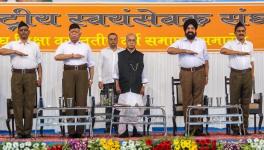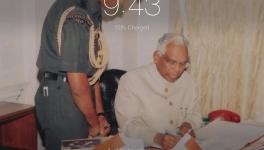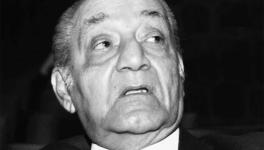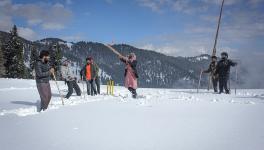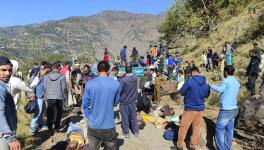The Massacre That Widened the Communal Gap
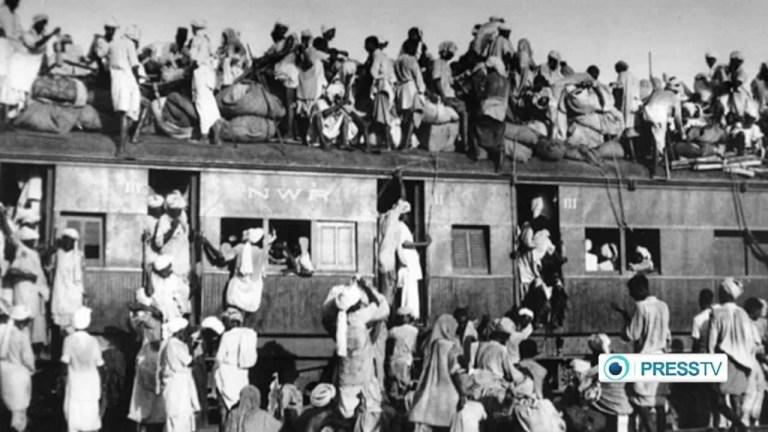
In South Asia, the most forgotten or the least documented genocide is the Jammu massacre. A month after the British left the subcontinent, during September 1947, half a million Muslims became refugees. They had to flee to Pakistan-administrated Kashmir, changing the demography of the region. There are no official figures, so one has to rely on the British reports of that period. ‘No less than 2,00,000 Muslim men, women and children were killed. The number was put in The Spectator. At least 27,000 women were abducted, and many were raped.’ The incident in September 1947 reportedly happened just five days before Pakistan irregulars’ attack in J&K, and nine days before the Maharaja accession to India. Ian Stephens, an editor of The Statesman, suggests that the large-scale massacre of Muslims happened with the approval of Maharaja Hari Singh.
India’s first prime minister lamented the incident calling it a “black stain on India.” On November 27, Mohandas Gandhi said that Jammu massacre hasn’t been fully reported by newspapers. A confidential former British intelligence operative informed American embassy that the violence was kept strictly secret. “Sikhs and Hindus undertook a wholesale massacre of the local Muslims in Jammu and it is stated that up to 20,000 were killed at the end of October,” he noted.
In a report “Elimination of Muslims from Jammu”, The Times gave a figure of 2,37,000 deaths. Later, in November 1947, the New York Times reported that Jammu had seen the scenes of massacres against Mohammedans in retaliation for Hindus and Sikh deaths in West Punjab. “Watching officials and military officers directed a huge mob against the Muslim refugee convoy (that) it hacked to pieces. Around 123 villages were completely depopulated,” the report stated.
In addition to the memories, accounts of horror, violations and human tragedy that unfurled with the events happened seventy years ago. What is also important to remember is how the massacre became an impetus for the larger communal gap which widened the two provinces further.
For instance, Urdu Bazar became Rajinder Bazar and Islamia School became Hari Singh High School. The then local media reportedly was instrumental in intensifying the “killings and exodus”. A Jammu-based Hindu paper boasting that ‘a Dogra can kill at least two hundred Muslims’ illustrates the communal “hatred” that pervailed.
In an interview on October 26, 1947 the former editor of Kashmir Times, GK Reddy, calls the “mad orgy of Dogra violence against unarmed Muslims as an episode (that) should put any self-respecting human being to shame.”
Moreover, seventy years after the gory incident in September 2017, Vikramaditya Singh, the grandson of Maharaja Hari Singh, resigned from the People Democratic Party complaining that his proposal of commemorating the day of September 25th for Maharaja Hari Singh was disregarded by the party. Besides, the other reason cited by him was downplay of the demands and aspiration of Jammu region by the party, which according to him, was the illegal settlement of Rohingya refugees who had taken refuge in Jammu.
The reasons as given by Vikramaditya hint towards the widening gap and the polarization of communities which has only intensified in recent years.
The 2008 agitation that took-off in Kashmir following the decision of transfer of land to Amarnath Shrine Board furthered the widening communal gap. The political struggle in Kashmir finds its roots in the subcontinent’s partition. The 1990s-armed rebellion against Indian rule, and the three recent mass uprisings have completely taken away the discourse from India. In Jammu, however, the opposite is the case. Since 1947, elements of Sangh Parivar have foisted a communal identity which has only grown in the region over the years. Many observers suggest that Jammuites often contrive the thoughts of the state’s political dispute on Rashtriya Swayamsevak Sangh’s political agenda.
In 2008, Vishwa Hindu Parishad and other similar Hindu-centric groups tried to raise apprehensions by syncing Amarnath Yatra with years of ‘injustice’ of Muslim-majoritarianism. In Kashmir, the land-transfer to the Shrine Board earned criticism from pro freedom groups including civil society members owing to its environmental hazards, as-well-as legal pitfalls of the land transfer decision. It not only raised eyebrows within the population, but also invoked fear of future in the region.
The then Jammu Praja Parisad launched a counter reactionary movement which led “economic and highway blockage” and even went on to “burn and kill truck drivers”. This significantly aroused communal tensions across the regions and the years preceding.
The Jammu massacre might be the outcome of events unfolding in 1947, but the carnage of the incident brought Pukhtoon tribesmen to Kashmir. Besides challenging the resolve of Poonch uprising, it also changed the demography of Jammu which had 78 percent Muslim population in 1941. This went down to 60 percent in 1961. Other than that, many facets within the contested state have gotten affected along with the change of demography including mutual-trust, intolerance, and communalization of politics of the two provinces.
Umer Beigh is an independent journalist from Kashmir. He is a graduate from Nelson Mandela Centre for Peace and Conflict Resolution, JMI, New Delhi.
Disclaimer: The views expressed here are the author's personal views, and do not necessarily represent the views of Newsclick.
Get the latest reports & analysis with people's perspective on Protests, movements & deep analytical videos, discussions of the current affairs in your Telegram app. Subscribe to NewsClick's Telegram channel & get Real-Time updates on stories, as they get published on our website.













